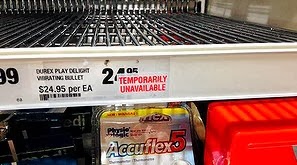There is an undercurrent in the Australian retailing
marketplace that is calling into question whether Aussie retailers are too risk
averse, and are therefore suffering in the innovation section of retailing.
While it has been said that innovation and risks go hand in
hand, the current view of market experts is that Australian retailers are, to
quote former Pacific Brands marketing manager Vicki Stirling, “a bit afraid” of
innovation.
This is an interesting point raised at a crucial time in the
Australian marketplace. With the volatility of the international trading
landscape coupled with the constant yo-yoing of the Aussie Dollar against the
greenback, so called “risky” business ventures in the retailing sector are more
often than not overlooked in favour of tried and true methods. What this does
not take into account is the constant craving for the “new” experienced by
consumers in all formats.
Innovation can be defined as the application of
better solutions that meet new requirements, inarticulate needs, or existing
market needs – and that consumer craving arguably comes under all three of
those banner areas.
Michael Wittner, Co-CEO of footwear brand Wittner Shoes, has
said that the integration of new technology with bricks and mortar retailing is
set to drive this innovation, and that the future take-up of the “mobile
wallet” in Australia will drive huge increases in the retailing sector. We have
all been a part of the gradual shift from currency to manual electronic payment,
to tap-and-go payment. Mobile payment optimises the tap-and-go opportunities,
clearing the way for a forecasted explosion in pop-up style stores across the
country. This driving innovation in the retail sector will put even further
strain on the classic bricks and mortar retailer to innovate in their own
offering.
A good of example of this is the E-Mart “flying store” –
Korean retailer Emart identified that people who are busy cannot always take
the time to visit stores. To combat this, they created a “flying store”, a
truck-shaped balloon that floated across a city, offering Wi-Fi access to the
Emart catalogue and store, which ended up increasing online and mobile sales by
over 150%.
What does this mean for us?
This is a real hot
button issue amongst retailers – on one hand, how do you break through the
everyday clutter of the retailing landscape while on the other hand not being
too risky about it? The real danger of risk-averse retailing is being left
behind. Who is going to see your weekly Press DPS when your audience is reading
their news online? Who saw your cracker 30sec TVC that launched last night when
your key audience was busy watching/reading about a TV series finale on the
net? Retailers are finding themselves more and more at the mercy of the digital
arena, and while as of now risk-averse advertising is heavily focused on your
classic media, the dangers of avoiding the digital age may become clearer down
the track.












